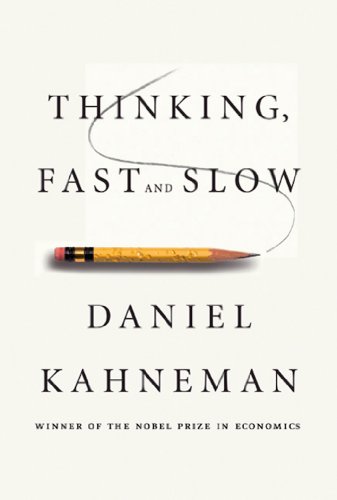

This article is an excerpt from the Shortform summary of "Thinking, Fast and Slow" by Daniel Kahneman. Shortform has the world's best summaries of books you should be reading.
Like this article? Sign up for a free trial here .
What is intensity matching? How does Daniel Kahneman’s intensity-matching approach help fight bias?
Intensity matching is translating values in a comparison across dimensions. Comparing values in different dimensions can help you make better judgments, but it can also lead to illogical thinking.
We’ll cover examples of intensity matching and how it’s involved in the process of evaluation.
Intensity Matching
System 1 (fast, intuitive thinking) is good at comparing values on two entirely different scales. Here’s an example.
Consider a minor league baseball player. Compared to the rest of the population, how athletic is this player?
Now compare your judgment to a different scale: If you had to convert how athletic the player is into a year-round weather temperature, what temperature would you choose?
Just as a minor league player is above average but not the top tier, the temperature you chose might be something like 80 Fahrenheit.
As another example, consider comparing crimes and punishments, each expressed as musical volume. If a soft-sounding crime is followed by a piercingly loud punishment, then this means a large mismatch that might indicate injustice.
Intensity Matching and System 1 Thinking?
Daniel Kahneman defines two systems of the mind.
System 1: operates automatically and quickly, with little or no effort, and no sense of voluntary control
- Examples: Detect that one object is farther than another; detect sadness in a voice; read words on billboards; understand simple sentences; drive a car on an empty road.
System 2: allocates attention to the effortful mental activities that demand it, including complex computations. Often associated with the subjective experience of agency, choice and concentration
- Examples: Focus attention on a particular person in a crowd; exercise faster than is normal for you; monitor your behavior in a social situation; park in a narrow space; multiple 17 x 24.
System 1 automatically generates suggestions, feelings, and intuitions for System 2. If endorsed by System 2, intuitions turn into beliefs, and impulses turn into voluntary actions.
System 1 can be completely involuntary. You can’t stop your brain from completing 2 + 2 = ?, or from considering a cheesecake as delicious. You can’t unsee optical illusions, even if you rationally know what’s going on.
Heuristics: Answering an Easier Question
Despite all the complexities of life, notice that you’re rarely stumped. You rarely face situations as mentally taxing as having to solve 9382 x 7491 in your head.
Isn’t it profound how we can make decisions at all without realizing it? Intensity matching is involved in this process. You like or dislike people before you know much about them; you feel a company will succeed or fail without really analyzing it.
When faced with a difficult question, System 1 substitutes an easier question, or the heuristic question. The answer is often adequate, though imperfect.
Before we look at how intensity matching is involved, consider the following examples of heuristics:
- Target question: How much is saving an endangered species worth to me?
- Heuristic question: How much emotion do I feel when I think of dying dolphins?
- Target question: How happy are you with your life?
- Heuristic question: What’s my current mood?
- Target question: How should financial advisers who commit fraud be punished?
- Heuristic question: How much anger would I feel if I were ripped off?
- Target question: How far will this political candidate get in her party?
- Heuristic question: Does this person look like a political winner?
Based on what we learned previously about characteristics of System 1, here’s how heuristics are generated:
- System 1 applies a mental shotgun with a slew of basic assessments and heuristics about the problem. These impressions are readily available without thought.
- Many impressions are more emotion-based than we would like.
- Next, System 1 uses intensity matching to scale the relevant assessments to the target question.
- How painful the image of a dying dolphin feels is scaled to how much money you’re willing to contribute.
- Note that this doesn’t actually directly answer the question – sometimes, the heuristic is actually asking a completely different question.
When Intensity Matching Gets Us in Trouble
The general solution to overcoming statistical heuristics is by estimating the base probability, then making adjustments based on new data. Let’s work through an example.
Julie is currently a senior in a state university. She read fluently when she was four years old. What is her grade point average (GPA)?
People often compute this using intensity matching and representativeness, like so:
- Reading fluently at 4 puts her at, say, the 90th percentile of all kids.
- The 90th percentile GPA is somewhere around a 3.9.
- Thus Julie likely has a 3.9 GPA.
Notice how misguided this line of thinking is! This is the danger of intensity matching. People are predicting someone’s academic performance 2 decades later based on how they behaved at 4. System 1 pieces together a coherent story about a smart kid becoming a smart adult.
The proper way to answer questions like these is as follows:
- Start by estimating the average GPA – this is the base data if you had no information about the student whatsoever. Say this is 3.0.
- Determine the GPA that matches your impression of the evidence. In this case, you might think someone who was fluent when she was 4 years old would have a GPA of 3.9.
- Estimate the correlation between your evidence and GPA. Do you think fluent reading at 4 years old is 100% correlated with academic success in college? Likely not—there are factors that affect reading age that aren’t relevant to college GPA, and vice versa. Is it 10% correlated? 50%?
- FInally, depending on the strength of your correlation, move from the average GPA from the first step to your estimated GPA in the second step. If you believe the correlation is just 10%, then you would move 10% from 3.0 to 3.9, ending up at around 3.1.
This methodical approach is generalizable to any similar prediction task. It avoids overly extreme results from intuition and intensity matching, instead using base rates and assessing the quality of information. It allows for regression toward the mean (eg replace “average GPA and student’s GPA” with “day 1 golf score and day 2 golf score”).
———End of Preview———

Like what you just read? Read the rest of the world's best summary of "Thinking, Fast and Slow" at Shortform . Learn the book's critical concepts in 20 minutes or less .
Here's what you'll find in our full Thinking, Fast and Slow summary :
- Why we get easily fooled when we're stressed and preoccupied
- Why we tend to overestimate the likelihood of good things happening (like the lottery)
- How to protect yourself from making bad decisions and from scam artists






